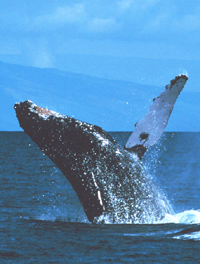Earth Island Institute Release
San Francisco, 4 April 2006
Earth Island Institute's International Marine Mammal Project (IMMP) declared victory in a series
of campaigns aimed at Japan's whaling industry.
On March 31st, the Japanese company Nissui, owner of whaling ships and a whale meat cannery,
announced they would divest their whaling company assets and no longer participate in Japan's
controversial "scientific" whaling scheme.
Nissui owns part of Sealord Tuna, based in New Zealand. As part of its International Dolphin
Safe Tuna Monitoring Program, Earth Island Institute's IMMP launched a boycott against Sealord
Tuna in New Zealand, urging the company to divest its whaling industry activities.
"The people of New Zealand and Australia refused to buy Sealord Tuna products once they
learned that Sealord was involved in whaling," stated David Phillips, Director of Earth
Island Institute. "This is the first time we have been able to influence a large Japanese
corporation to stop whaling."
"Our standards for Dolphin Safe tuna includes provisions that a company cannot be involved
in other destructive practices, such as whaling," stated Mark Berman, Associate Director of
IMMP.
"Our work in New Zealand and Australia publicized the links of Sealord to Nissui and
their whale slaughter, and led consumers to take action in the supermarkets across the country."
In 1985, the International Whaling Commission (IWC), under pressure from the environmental
community, instituted a moratorium on commercial whaling.
The following whaling season in 1986, Japan's government countered the move by starting
"scientific whaling" to "study" whales. |














